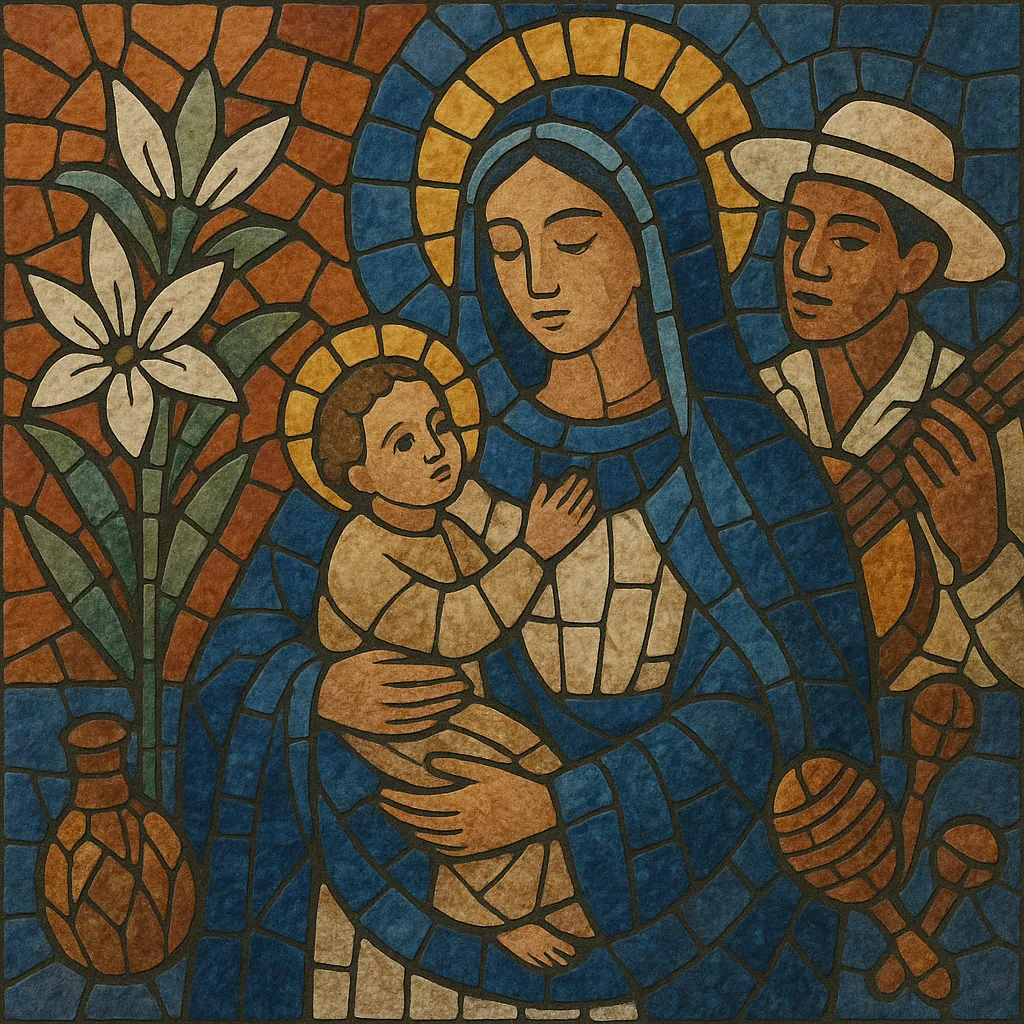Purísima is a Nicaraguan devotional song tradition associated with the Marian feast of the Immaculate Conception, celebrated during the novena that culminates on December 7–8 (La Gritería/La Purísima). The repertoire—known locally as cantos de la Purísima—consists of strophic, easily singable pieces performed in call-and-response between a lead singer and the gathered community at household altars and churches.
Stylistically, Purísima draws on Iberian villancico and Catholic hymn models but is shaped by Central American folk practice: major-mode melodies, I–IV–V harmonies, memorable refrains, and buoyant 2/4 or lilting 6/8 grooves. Performances often include guitars, marimba de arco, hand percussion (panderetas, güiro, maracas), and the festive sounds of bells and firecrackers, creating a communal, celebratory atmosphere. Iconic shouts such as “¿Quién causa tanta alegría? ¡La Concepción de María!” function as musical cues and social ritual.
The Purísima tradition emerged in colonial Nicaragua in the 1700s, when Spanish Catholic devotion to the Immaculate Conception took root and blended with local musical customs. Cathedral and parish practices around novenas and processions encouraged strophic, participatory songs that ordinary congregants could remember and sing.
As the Marian devotion became a hallmark of Nicaraguan identity—especially in León, Granada, and El Viejo—communities developed a recognizable body of “cantos de la Purísima.” These songs adopted the accessible melodic style and refrains of the Iberian villancico and hymn, while incorporating regional timbres (marimba de arco, homemade percussion) and performance contexts (household altars, neighborhood rounds) that set the practice apart.
In the 20th century, Purísima solidified as a national seasonal tradition tied to La Gritería (Dec. 7) and the feast day (Dec. 8). Public squares, churches, and private homes host altars and communal singing, with sweets and gifts distributed to participants. Radio, choral arrangements, and popular Nicaraguan songwriters helped standardize and disseminate key pieces, while preserving the participatory, call-and-response character that defines the genre.
Purísima remains a living, community-driven repertoire. Choirs, family ensembles, and neighborhood groups perform the songs annually, often updating instrumentation while retaining the simple harmonic language, familiar refrains, and ritual shouts that connect contemporary celebrations to centuries of tradition.
Write strophic, congregational songs with memorable, syllabic melodies in a comfortable vocal range. Favor bright major modes and succinct refrains that invite call-and-response and communal shouts (e.g., “¿Quién causa tanta alegría? ¡La Concepción de María!”).


